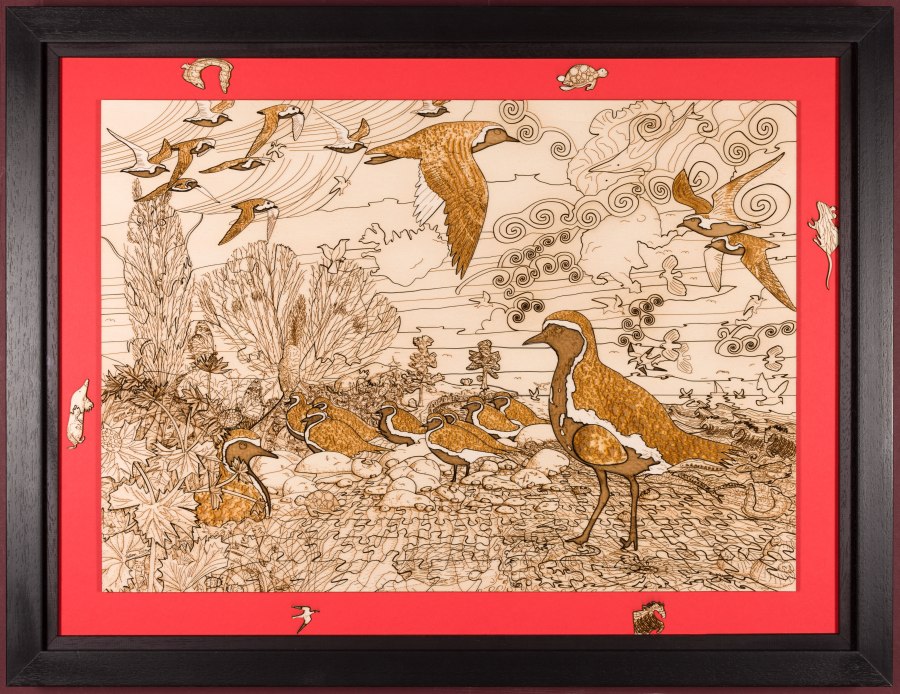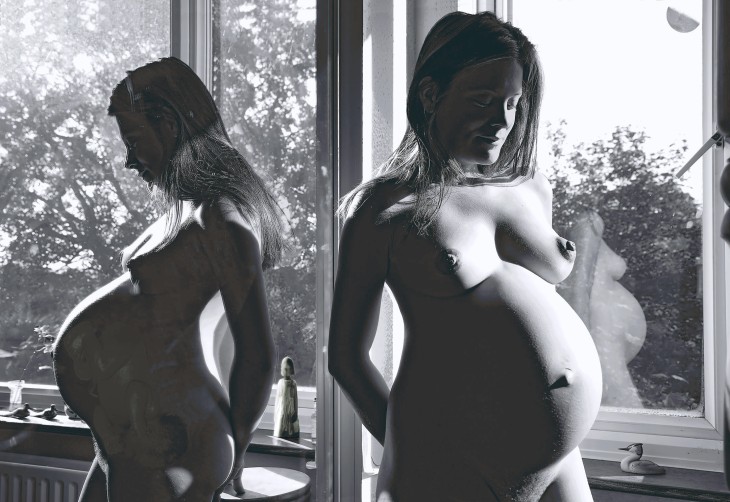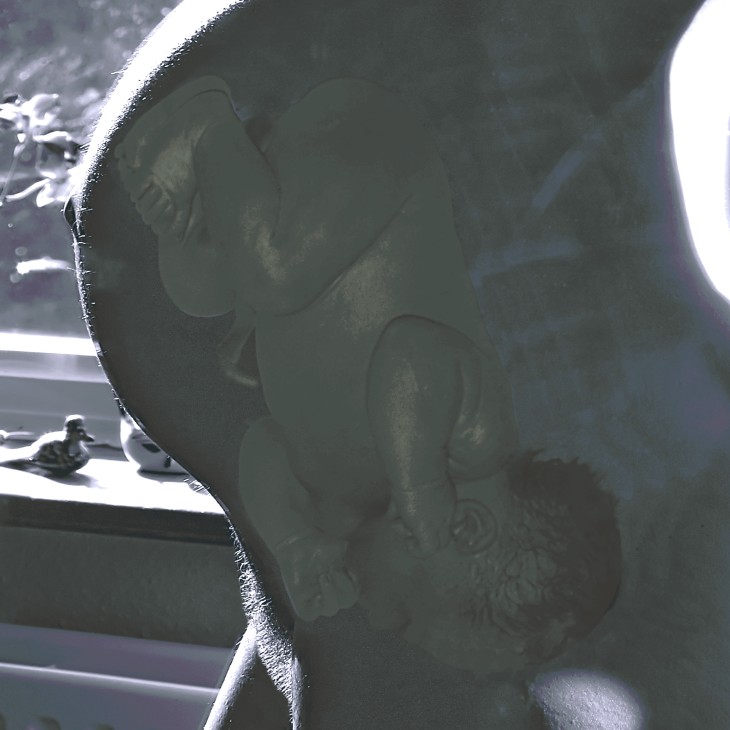It’s difficult sometimes to know what to include in an artist’s diary. I keep my diary to the absolute minimum – not only because I simply don’t have the time to jot down everything, but I have a high level of self-censorship. Some things are trivial, however, who knows what legacy I may leave (if any), and what are significant landmarks in an artists’ life that may be of historical and/or biographical interest…?
This is not a posting about any specific piece of work, I just want to put an entry in the diary of recent achievements that will probably be the beginnings of a fruitful seam of creativity for me – after having recently solved a series of technical challenges (wearing my IT (computer programming) hat) that literally enable some creative ideas that would otherwise not be realisable…
I’ve long been interested in depicting puzzling, ambiguous, dimorphous ideas in art – and have had many, and a growing number of, ideas mulling around in my head for several years – but with no satisfactory or acceptable way of representing them. So they have been on the backburner – waiting for solutions…
In parallel to this, for the last few years I’ve been exploring puzzles as a means artistic expression, and this has resulted in me spending hundreds of hours doing vector-based freehand drawings (using a graphics tablet). I have recently been doing some intricate image manipulations and transformations manually (with the creative software I use), and this gave me the idea of using these techniques for the aforementioned other art ideas. However, the problem is (was) that these techniques, if applied to the other ideas, would take prohibitively long. With my IT hat on, I wondered if there might be a way to program some, or all, of these laborious tasks…?
The great thing about computer programming is that once you solve a problem, it’s a trivial matter to scale it up. For example, if you get a computer program to draw a grid of rectangles – let’s say 5 by 7 – then it’s a trivial matter to get it to do any number of rectangles – e.g. 500 x 700, 5,000,000 x 7,000,000 – or any number you choose. Also, the repeatability of any solved task opens up enormous opportunities – including testing, simulations, daisy-chaining tasks, etc…
I’ve never mixed proper art with computer programming before. I have designed and developed an art program for others to create digital art, but I’ve never used computer programming to create, or help create, art. However, a few weeks ago I thought it could be a very worthwhile investment of my time to see if I could automate some tasks which would otherwise be too laborious to be conscionable…
So I looked at the following :-
- Generate a vector puzzle of any size (these are freely available online)
- Break a bitmap image into any vector puzzle
- Make jigsaw puzzle tiles of any colour – particularly random colours from a given palette
- Break a given percentage of a bitmap image into puzzle pieces. Set these pieces to a given colour or a random selection of colours from a given palette
- Interleave the puzzle pieces of two (or more) images
- Allow the masking (in or out) of any of the above
- Allow the manual manipulation of any of the above – i.e. everything should be manually changeable
The handful of solutions (the above tasks are very different – and each require a different solution) I have recently come up with collectively give me what I would describe as a new visual grammar with which to express – or depict – a number of visual ideas – including all the ones I have been struggling with prior to this point… Watch this space…
March 2024
































































































































































 That part of the image in the centre of our field of vision is in sharp focus (excepting for long- and short- sightedness), and the rest of the image gets progressively out of focus – the further away from the centre we go. But we are usually not aware of this. Anything we scan our eyes over becomes instantly sharp. The fact is we are constantly re-focusing as we scan a scene. If we are looking at one part of a scene it is in sharp focus. We may not even be aware that the rest is out of focus, because no sooner have we moved our eyes to something else, then that new part becomes immediately in focus.
That part of the image in the centre of our field of vision is in sharp focus (excepting for long- and short- sightedness), and the rest of the image gets progressively out of focus – the further away from the centre we go. But we are usually not aware of this. Anything we scan our eyes over becomes instantly sharp. The fact is we are constantly re-focusing as we scan a scene. If we are looking at one part of a scene it is in sharp focus. We may not even be aware that the rest is out of focus, because no sooner have we moved our eyes to something else, then that new part becomes immediately in focus. The photographer has to decide what he/she wants you to focus on – that is what he/she wants to focus on themselves, and they capture that in stone as it were. You are not free to focus on what you want. That is not necessarily a criticism – indeed it may well be the intention. But in this case my intention is that you should be free to look at any part of the picture in great detail – as I had the pleasure of doing.
The photographer has to decide what he/she wants you to focus on – that is what he/she wants to focus on themselves, and they capture that in stone as it were. You are not free to focus on what you want. That is not necessarily a criticism – indeed it may well be the intention. But in this case my intention is that you should be free to look at any part of the picture in great detail – as I had the pleasure of doing. Was it the process of painting they enjoyed or were they trying to capture something they considered beautiful, captivating, worthy of putting on a pedestal…?
Was it the process of painting they enjoyed or were they trying to capture something they considered beautiful, captivating, worthy of putting on a pedestal…? I did actually see the hare and the deer running through the field – sadly they were fleeing from a near by gun shot blast – I don’t think it was their natural choice to be there. But it gave me an idea…
I did actually see the hare and the deer running through the field – sadly they were fleeing from a near by gun shot blast – I don’t think it was their natural choice to be there. But it gave me an idea…

 the sunbathing red admiral (red-wing-tipped butterfly), the flying ringlet (brown butterfly), and all the insect and arthropod activity – all this happened in front of me over a period of about half an hour. Conventional photography could capture such a scene in one shot using an ideal camera (which doesn’t exist!), a very fast shutter speed, and a very great deal of luck. I had to resort to less miraculous and time-consuming creative techniques to create this image…
the sunbathing red admiral (red-wing-tipped butterfly), the flying ringlet (brown butterfly), and all the insect and arthropod activity – all this happened in front of me over a period of about half an hour. Conventional photography could capture such a scene in one shot using an ideal camera (which doesn’t exist!), a very fast shutter speed, and a very great deal of luck. I had to resort to less miraculous and time-consuming creative techniques to create this image…
